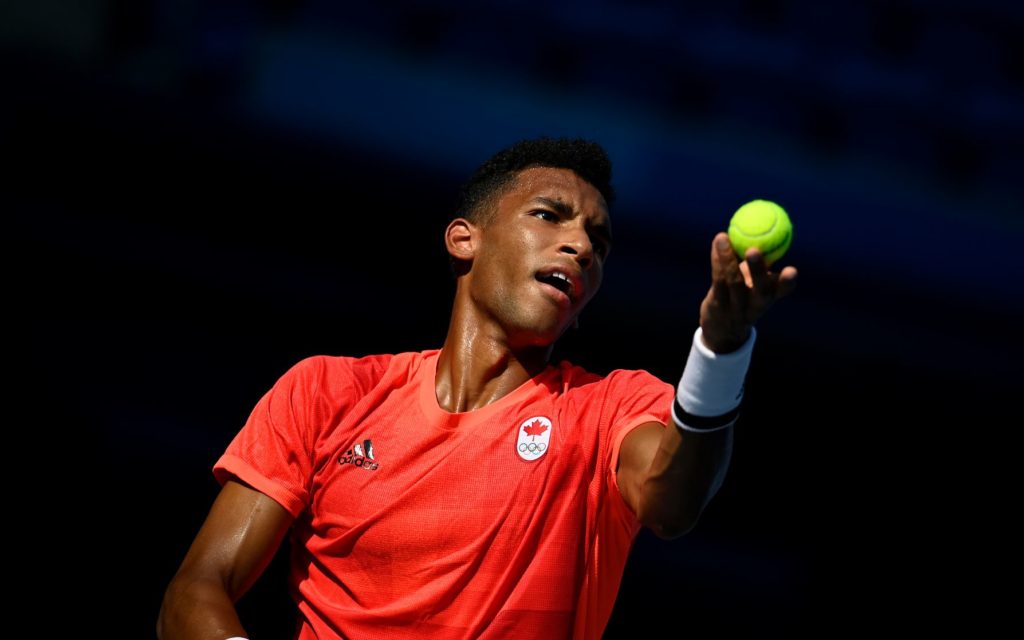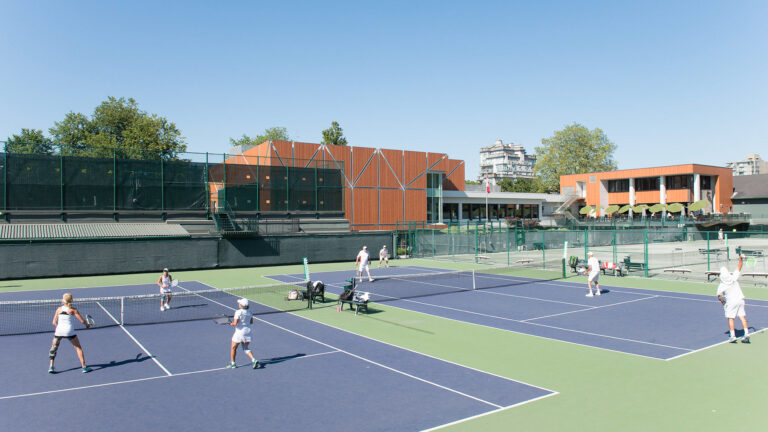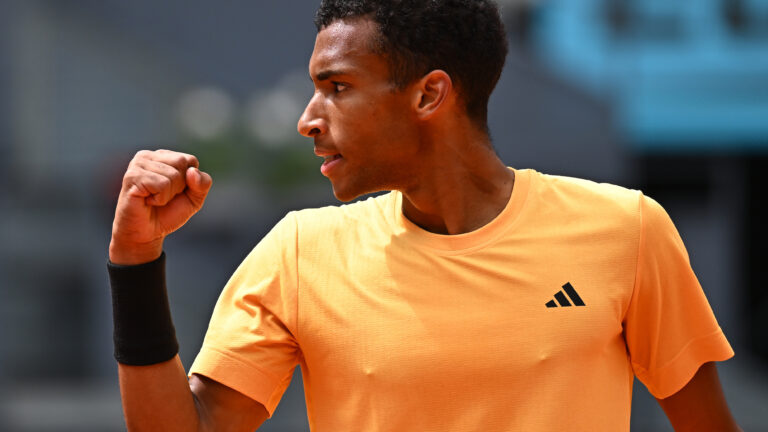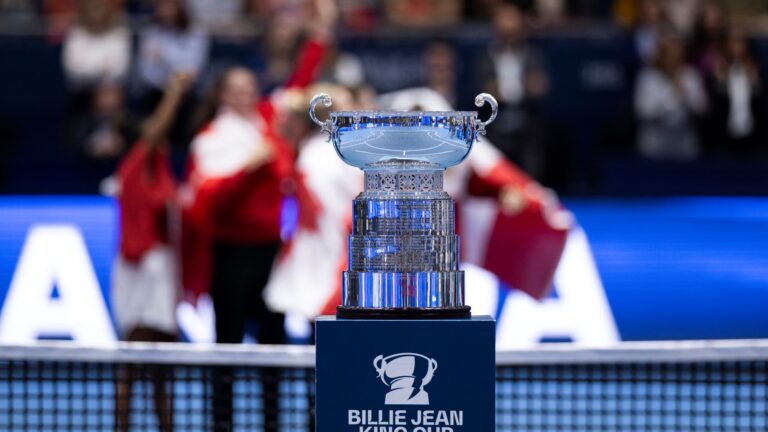
Photo : Kopatsch/Sato/Sidorjak
July 26, 2023 marks exactly one year out from the 2024 Summer Olympic Games in Paris, France.
It will only have been three years since the last Olympic competition when the players take to the court at Roland-Garros, looking to bring home gold for their nation.
With one year to go until the Games, it is a good time to look ahead and provide everything you need to know about tennis at Paris 2024.
How does Olympic Tennis work?
The tennis event at the Olympics functions in mostly the same manner as any other top-level tennis tournament.
There will be five competitions: men’s and women’s singles, men’s and women’s doubles, and mixed doubles. The singles draws will feature 64 players and six rounds, making it similar to a Masters/WTA 1000 event. The men’s and women’s doubles draws will include 32 teams and five rounds, while the mixed doubles will have 16 teams and just four rounds.
All matches will be Best-of-Three sets with a standard (first to seven) tiebreak at the end of each set, including the deciding set. For all doubles competitions, the third set will be a super (first to 10) tiebreak, again the same as a 1000-level event.
One difference, with it being the Olympics and three medals being awarded, is that the losing semifinalists are still required to play another match for the bronze medal.
Read also: Galarneau’s Granby Glory Leads Big Canadian Week
The biggest difference between the Olympic tournament and every other tournament on the ATP and WTA tours is player eligibility.
Who is eligible to play at the Olympics?
The eligibility for the Olympics is different from regular tour events, which are based purely on rankings.
Rankings are a factor and will be based on the June 10, 2024 rankings. However, it will not simply be the Top 56 athletes who get into the singles draws (eight spots are reserved for other conditions).
Each nation is limited to just four athletes in the singles competitions and two doubles teams. If a country has more than four athletes in the Top 56, only the top four can be selected. For example, Czechia has eight women in the Top 56 of the WTA rankings; only four can compete.
This limit is unlikely to be an issue for Canada, as there are only two men (Felix Auger-Aliassime and Denis Shapovalov) and one woman (Bianca Andreescu) are currently among the Top 56.
Participation in the Davis Cup or Billie Jean King Cup during the Olympic cycle, in this case since 2021, is required to be eligible for the Olympics. A player must have been nominated for and present at a minimum of two ties/events, with at least one of those participations being in 2023 or 2024.
If a player does not meet the Davis/Billie Jean King Cup requirements, a panel does exist to consider extenuating circumstances and may grant eligibility.
For doubles, players in the Top 10 of the doubles ranking receive direct entrance as long as their partner is ranked inside the Top 300. After that, places are determined based on the combined rankings of the two members of the team.
Mixed doubles will be based on the combined ranking of the two players.
Across all five competitions, a country can send no more than six men and six women. Final nominations for the Olympics will be determined by the Tennis Canada Olympic Selection Committee.
Which Canadians will be competing in Paris 2024?
It is still too early to say which Canadians will compete in Paris, as entry is based on the rankings 10 months from now.
Read also: Pressure Not a Problem for Fernandez
As of July 2023, Leylah Annie Fernandez, Rebecca Marino, and Gabriela Dabrowski all meet the required Billie Jean King Cup eligibility criteria.
Andreescu, Katherine Sebov, Carol Zhao and Francoise Abanda each only need to appear in one Billie Jean King Cup event prior to the Olympics to meet that criteria and could do so by participating at the 2023 Finals, which Canada has already qualified for.
Canada’s Davis Cup team has not played in 2023 yet because of their bye as reigning champions. Auger-Aliassime, Shapovalov, Vasek Pospisil, Alexis Galarneau, Gabriel Diallo, Steven Diez and Brayden Schnur would all become Olympic eligible by participating in one Davis Cup event prior to the Olympics. Canada is next playing in the Davis Cup Finals group stage in September.
Read also: Galarneau Crowned Champion in Granby, Sebov Women’s Runner-Up
Were the Olympics held today, only Auger-Aliassime, Shapovalov, and Andreescu are in direct entry places based on their rankings, although that does not factor in nations with more than four athletes which would extend the cutoff. The rest have just over 10 months to increase their rankings to the point of qualification.
Canada’s History at the Olympics
Since tennis was officially reintroduced to the Olympics in 1988, Canada has sent at least two athletes to every Games.
Canada has won one medal in Olympic tennis. At the 2000 Summer Games in Sydney Australia, Daniel Nestor and Sébastien Lareau defeated the local favourites Todd Woodbridge and Mark Woodforde to win the men’s doubles gold medal.
Nestor also finished fourth in the men’s doubles at Rio 2016 with Vasek Pospisil, losing to eventual gold medalists Rafael Nadal and Marc Lopez of Spain in the semis before falling to Americans Steve Johnson and Jack Sock in the bronze medal match.
At the last Olympics in Tokyo, Leylah Annie Fernandez went down in the second round to reigning French Open champion Barbora Krejcikova, while Felix Auger-Aliassime lost in the first round to Max Purcell of Australia.
Gabriela Dabrowski competed in both women’s and mixed doubles, but lost in the first round of both with Sharon Fichman and Auger-Aliassime respectively.


